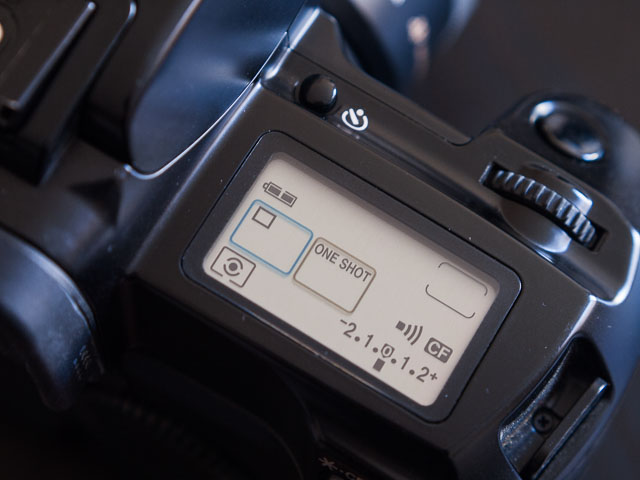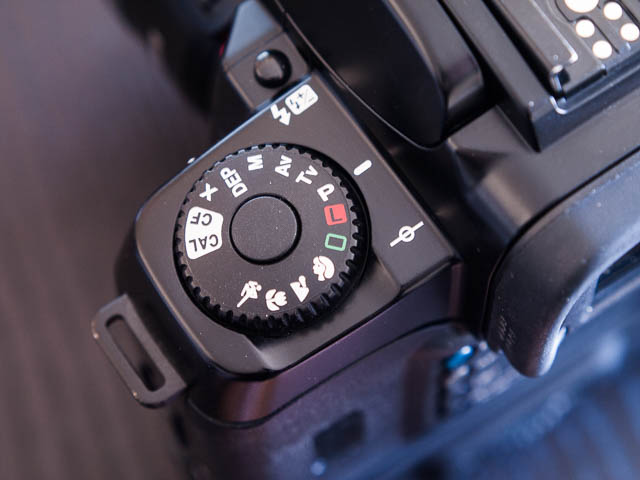Canon EOS 5
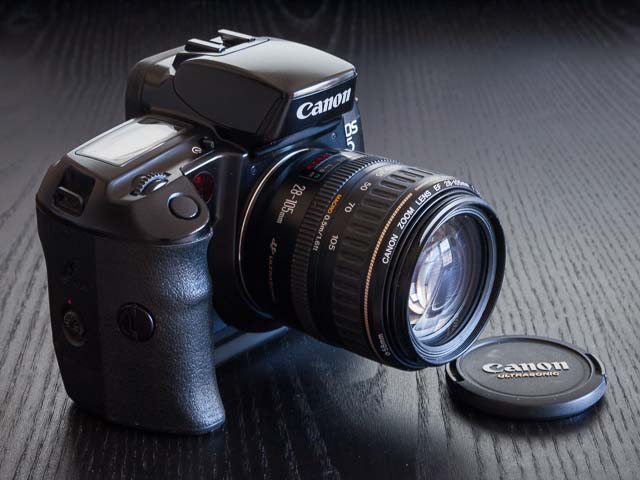
I don’t really think of this camera as a part of my camera collection because I bought it as my main day-to-day camera around 1997. I then used it for about 5 or 6 years fairly intensively before I finally bought my first DSLR (a Canon EOS 300D). But since this camera was introduced over 20 years ago I guess it could be considered classic! Although I got on very well with the EOS 5 I always missed by first serious camera, an Olympus OM3 (which was retired when it became unreliable). I always thought the EOS 5 felt a bit plastic-y, though it has to be said it stood up to 5 or 6 years of fairly intensive use pretty well and it looks not far short of mint today, so the build quality can’t have been that bad.
Canon introduced the EOS 5 at the top of their consumer range in 1992. Until 1998 when the EOS 3 model was introduced, you had to move up to Canon’s fully professional EOS 1 range of cameras to improve on the EOS 5. The camera has an impressive specification to match it’s place at the top of the consumer range:
- TTL Phase Detection Auto Focus
- Shutter speed range: 30s - 1/8000s
- Viewfinder: 92% vertical coverage, 94% horizontal coverage, 0.73 magnification
- Metering: 16 zone evaluative metering, centre-weighted and spot
- AF operating range at ISO 100: EV 0–18
- Built-in flash
- Five frames per second in one shot AF mode
- Three frames per second in AI servo AF mode
- Five horizontal autofocus sensors
- Eye-controlled focusing
- Custom functions
- Requires one 6V 2CR5 batteries
- Dimensions and weight 154 × 121 × 74 mm, 675 g (1.49 lb)
One of the most interesting technological advances in the EOS 5 was the eye controlled autofocus point selection. Basically you could just look at the focus point you wanted to use to select it… all very sci-fi!! But the system had it’s problems: it has to be calibrated for each photographer’s eye, and it doesn’t work when the camera is held vertically. I find that maybe two thirds of my shots are vertical, so I just left this system turned off most of the time.
This camera was sold in the US as the EOS A2. Because of a US patent on the use of digital scales to show under and over-exposure, the A2 doesn’t have the 5’s very useful indicator of exactly how much you were under or over exposed when in manual mode, which really just shows you how daft the patent system it!
Detailed Canon EOS 5 photos
Here you can see the EOS 5 with the Canon EF 28-105mm f/3.5-4.5 USM lens and VG10 grip.
The VG10 grip might look like a battery grip, but it doesn’t actually allow you to fit extra batteries for extended battery life. It’s only purpose was to improve handling (and make you camera look even bigger and butcher!).
I sold most of my Canon equipment when I moved to Pentax. All that I kept was the EOS 5 and the 28-105mm lens. This was effectively the ‘kit’ lens for the EOS 5, but as befits the 5’s top-of-the-range status this certainly isn’t like any of the cheap plastic-mount kit lenses you get with todays DSLRs!
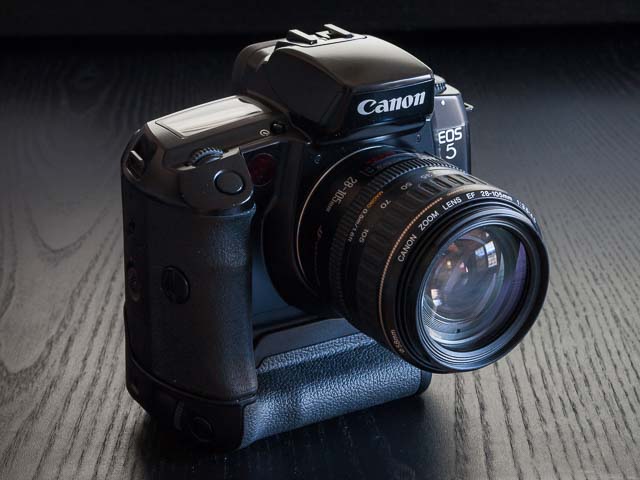
Here you can see the EOS 5/VG10 combination from the back. You can see the second control dial that complements the main control dial near the shutter button.
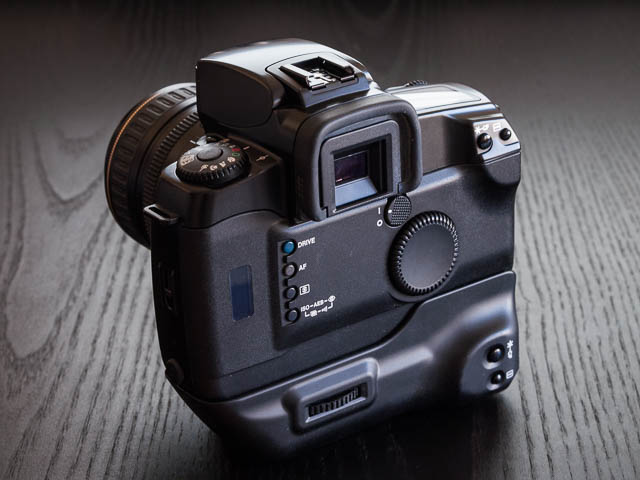
I still have all the boxes for my EOS 5. I never throw the boxes away when I buy new stuff. The original packaging makes old cameras much more interesting. Not that the EOS 5 is really ‘old’ just yet, but one day it will be ;-)

Photographs taken with the Canon EOS 5
These photographs were all taken on a holiday to Prague and in around 1998, using the EOS 5 and the 28-105mm lens, together with Ilford XP400 film.












